Best Egg laying Chicken Breeds
by Jennifer Behm – Chicken farmer| Last Updated – 28 December 2020
- Black Australorp “Super human friendly”
- Buff Orpington “Great chicken for beginners”
- Golden Comet chicken “Particularly prolific”
- Rhode Island Reds “Really good foragers”
- Araucana “Blue to green-hued colored eggs”
- Barred Rock “Nicest and most docile”
- White Leghorn “White chicken and eggs”
- Golden Laced Wyandottes “Very pretty”
- Speckled Sussex “Great dual purpose”
- New Hampshire Red “Tough chicks”
The top 10 chickens for backyard chicken coop, we think are best, and we’re going to be picking out the best traits, like how many eggs they lay a year, how fast they lay, how good they are with different temperatures, their hardiness, their personality, et cetera.
Reed on:
- TOP 10 Chicken Breeds Review
- What’s the best laying chicken for colored eggs?
- Choosing the Best Breed of Chicken
- Buying your First Chickens
- Bringing your New Chickens Home for the First Time
| Breed | Weight | Eggs per year | Egg color | Start laying |
|---|---|---|---|---|
| Australorp | 2.250–3.10 kg | 250 | Brown | 22 to 24 weeks |
| Orpington chicken | 3.60–4.55 kg | 200 | Brown | 19 to 24 weeks |
| Golden Comet chicken | 6lb | 250 to 300 | Brown | 15 weeks old |
| Rhode Island Red | 3 kg (6.6 lb) | 260 | Brown | 18 to 24 weeks |
| Araucana | 2.2–2.7 kg | 250 | Blue or Green | 25 weeks to 30 |
| Plymouth Rock chicken | min 2.95 kg (6.5 lb) | 280 | Brown | 18 and 22 weeks |
| Leghorn chicken | 2.0–2.3 kg | 280 | White | 16 to 17 weeks |
| Wyandotte chicken | 2.7–3.2 kg (6–7 lb) | 200 | Brown | 18 to 20 weeks |
| Sussex chicken | minimum 3.2 kg | 250 to 300 | Tinted | 16 to 20 weeks |
| New Hampshire chicken | 2.9 kg (6.5 lb) | 200 | Brown | 17 to 20 weeks |
Read More from prestigequeen.com :
TOP 10 Chicken Breeds for Backyard 2020
The best chicken breed for winter
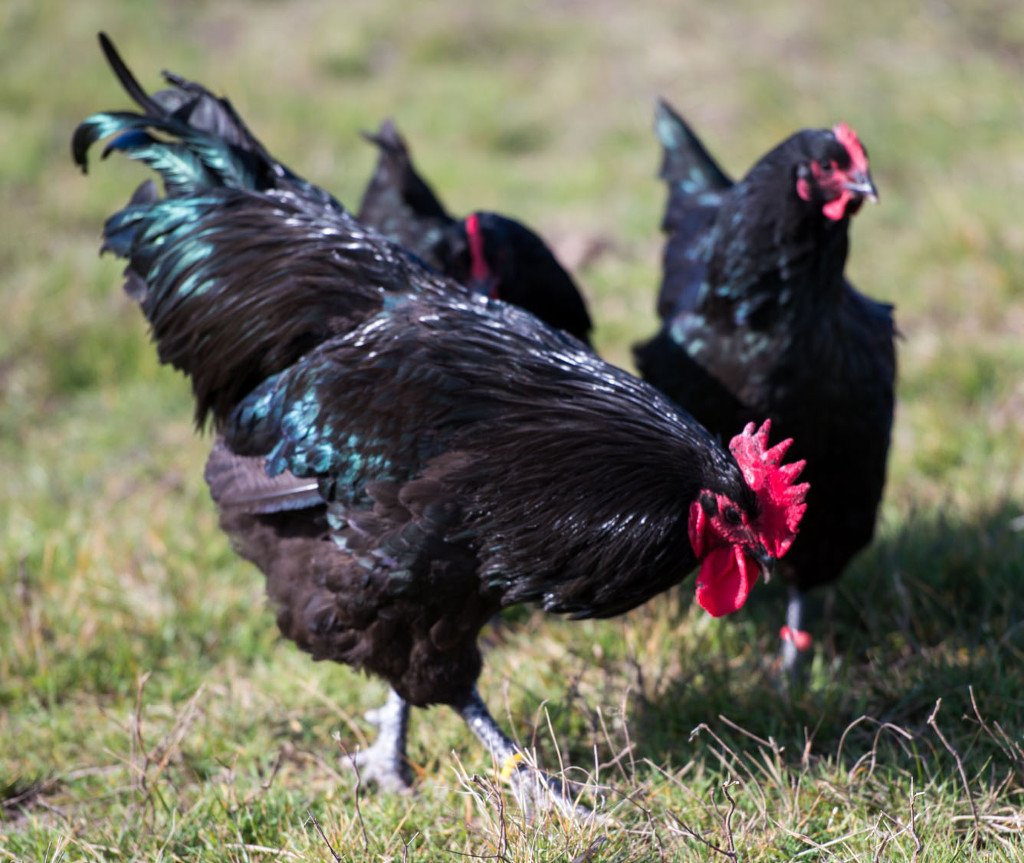
Black Australorp
The first chicken is going to be the Black Australorp breed. These chickens are super human friendly. They’re great for if you’re a beginner. Their production is fairly high, they lay about 250 eggs annually. They start laying between 22 to 24 weeks, so they are a little bit later or they take a little bit longer of time to mature in order to lay their eggs, but nonetheless, they’re still a really great breed just because of how human friendly they are.
Another great aspect with Black Australorps is that they’re extremely hardy when it comes to really cold weather. If you live in a colder region or you’re concerned about that, a Black Australorp is a great breed to include in your flock.
Pros:
- Extremely hardy when it comes to really
- Human friendly
Cons:
- Start laying between 22 to 24 weeks
Best egg laying chickens for beginners
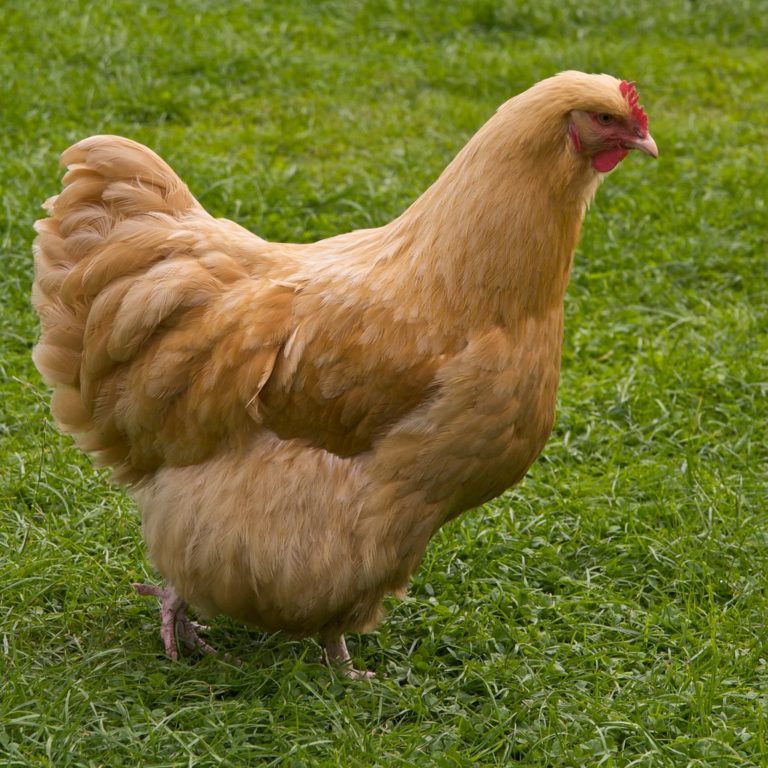
Buff Orpington
So number two is going to be Buff Orpington. These are great chicken for beginners. They’re blonde, they’re fluffy. They produce about 200 eggs a year, so not as much as the Black Australorp, but again, they’re really good for beginners. They’re very hardy. They start laying around 19 to 24 weeks. Overall, these are just such a classic chicken to have on the homestead, they’re great for beginners. If you’re going to raise chickens with your kids, definitely would recommend the Buff Orpington.
Dual-purpose breed
I will add, what they lack in egg production, they actually make up with their weight, if you’re going to do a dual-purpose chicken, having them as a meat chicken, basically. So they do makeup with their size.
Behaviour
Orpingtons are lazy birds and will grow fat if not free ranged. They have a very strong tendency to go broody and therefore make great mothers. Their wingspan is short therefore they can be kept in areas with low fences.
Appearance
The Orpington has a heavy, broad body with a low stance and their legs are mostly covered by the down from their bodies. The standard colours for an Orpington are black (single or rose comb), blue (laced) buff and white. The dark colours have dark eyes and legs while the paler colours have red eyes and white legs.
Pros:
- Best for raising up with kids
- They’re fluffy
- Dual-purpose breed
Cons:
- 200 eggs a year
Best laying chickens for the free walking
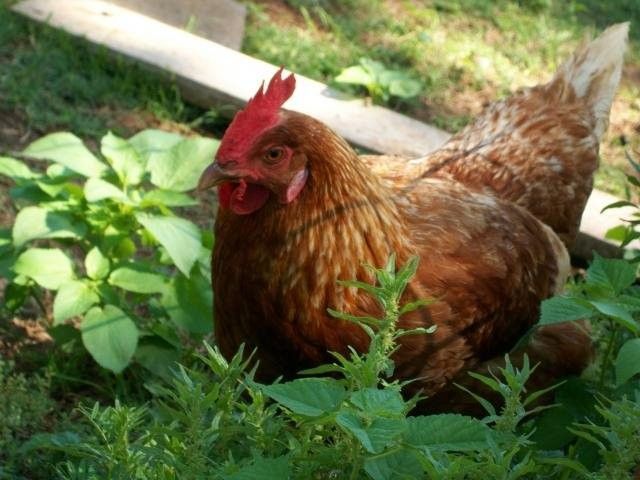
Golden Comet chicken
Number three is the Golden Comet chicken. These chickens are particularly prolific when it comes to laying the eggs. They lay about 250 to 300 eggs annually, so that’s a lot of eggs. They also are really great free-range bird to have on your homestead. It’s great for letting them just to go out and forage and get all those bugs that you might have that could affect your garden. And they can help, with their free-range, reduce how much food they eat, so they’ll save you some money there too.
Overall, their temperament is pretty much gentle, quiet. They get along with other breeds of chickens really well, and people too, so that’s a really big plus. And another really big plus is they start laying eggs when they’re only 15 weeks old. So you’re going to start getting eggs really, really soon. So if you have these chickens available at your local feed stores, or if you can order them, I definitely recommend picking up some Golden Comet chickens.
Pros:
- These chickens are particularly prolific
- Great free-range bird
- Start laying eggs when they’re only 15 weeks old
Cons:
- not
Best laying hens

Rhode Island Reds
Number four is the Rhode Island Reds. Now for egg production is pretty good, they’re about 260. They start laying from 18 to 24 weeks. They’re really, really good foragers. They’re very hard. But one of the downsides is that they are a little bit more aggressive, kind of a mean chicken to other smaller chicks. Yo chicks stop bullying. Not always a good thing. It can be kind of a challenge when you have some chicks being mean and pecking at other chicks, but overall, they’re a really good chick to have around.
Behaviour
Rhode Island Reds may be the heavyweights of the chicken world, but they are an active breed. Rhode Island Reds like nothing better than foraging amongst grasses and hedges and are also surprisingly quiet for their level of activity. These are tough, disease resistant, birds that can cope with harsher climates, while their active nature and general alertness makes them interesting pets.
These chickens generally are good-natured and are good pets for children, but they can get aggressive when annoyed or feel threatened, especially the roosters. Although they are widely known as good layers, during particularly cold periods, if the coop temperature drops below freezing (0 °C (32 °F)), their egg output does drop considerably. The tips of their combs are also very susceptible to frostbite, so liberal applications of petroleum jelly may be needed.
Appearance
The bird’s feathers are usually rust coloured often with white streaks, however darker shades are not uncommon including a maroon bordering/black variation. Their eyes are a red – orange colour and they have yellow feet and reddish-brown beaks. Chicks are a light red to tan color with two dark brown bars running down their backs.
Pros:
- They’re very hardy
- Good foragers
Cons:
- They are a little bit more aggressive
Best chickens for blue to green-hued colored eggs
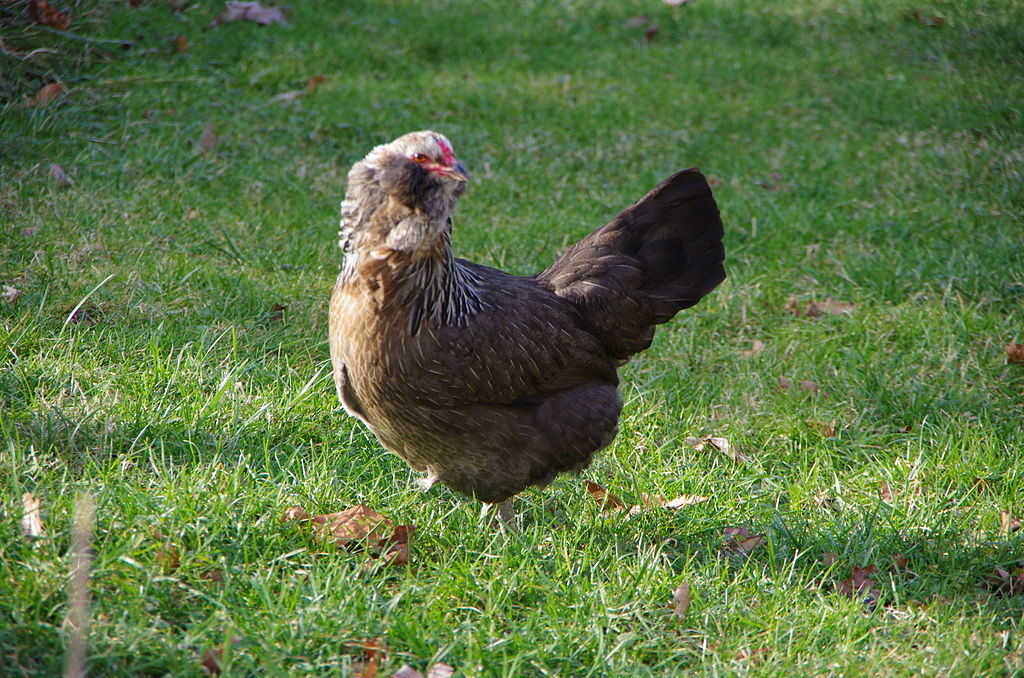
Araucana – Easter Egg chicken
So number five on our list is the Ameraucana or the Easter Egg chicken. These chickens lay really cool eggs. They lay blue to green-hued colored eggs. They lay about 250 a year, and they’re really, really great for a wide variety of climates. They’re very adaptable, so I would put them in that hardy zone.
Some downsides though, to these chickens, is it can take from 25 weeks to 30 weeks to start seeing the egg production. They can be a bit broody, so you might have to monitor them sitting on the eggs and not laying eggs. They’re on the lighter side as far as weight, so I wouldn’t say they’re as good as a dual-purpose chicken as some of the others, but nonetheless, they produce a really, really fun colored egg, and they’re just a nice addition to your diverse flock. The last cool thing about them is the kind of do look like Predator.
Behaviour
Araucana produces wonderful, blue-shelled eggs and has a nice relaxed character, especially when hand-reared. The Araucana’s eggs although highly sought after for their lovely color are of course no more nutritious than any other eggs. Araucan chicks are sturdy and fast-growing. They do tend towards broodiness and as a result, make excellent mothers.
Araucans are happy to be kept in a pen but do like a supply of fresh grass so runs should be moved regularly if not free ranged.
Appearance
The Araucan is a strikingly good looking chicken with an impressive range of colours. The Araucana is a chicken breed that combines the unusual traits of tufts, blue eggs and rumplessness. Tufts are unique to Araucanas, each being composed of a group of feathers that grow from a protruding flap of skin located near the ear, called a peduncle. These tufts differ widely in size and shape. American Araucanas are rumpless, which means that they do not have a tail or any remnant of a tail.
When the Araucana was first introduced to breeders worldwide, in the mid-20th century, it was realised that the genes that produced tufts also caused chick mortality. Two copies of the gene causes nearly 100% mortality shortly before hatching, while one copy causes about 20% mortality and the tufted gene is dominant. Because no living Araucana possesses two copies of the tufted gene, breeding any two tufted birds leads to half of the resulting brood being tufted with one copy of the gene, a quarter being clean faced with no copy of the gene and a quarter of the brood dead in the shell having received two copies of the gene.
In the decades to follow, most breeders chose to either preserve the old style of bird or to breed out the tufts and increase productivity. In 1976, the first standards for the breed were accepted by the American Poultry Association, conforming to the traditional style. This was followed, in 1984, by a second standard for the ‘improved’ variety.
The gene for blue eggs is dominant, so the term ‘Easter Egger’ is used to describe birds of mixed breeding that produce such eggs. Unfortunately, these mixed breeds are often incorrectly labeled as Araucanas or Ameraucanas and falsely marketed to unsuspecting poultry hobbyists.
It is worth noting the following differences:
- Araucana – Tufts (fatal allele), rumpless, blue eggs, green legs and mostly yellow skin.
- Ameraucana – Beards and muffs (no fatal gene), with tail feathers, blue eggs, blue legs and white skin.
- British, Irish, New Zealand, South African and Australian Araucana – Beards, muffs and crest, with tail feathers, blue eggs, slate legs and grey/white skin.
- Easter Egger – Variable traits
Pros:
- Really cool eggs
- Great for a wide variety of climates
Cons:
- Sart laying between 25 weeks to 30
Best egg laying chickens
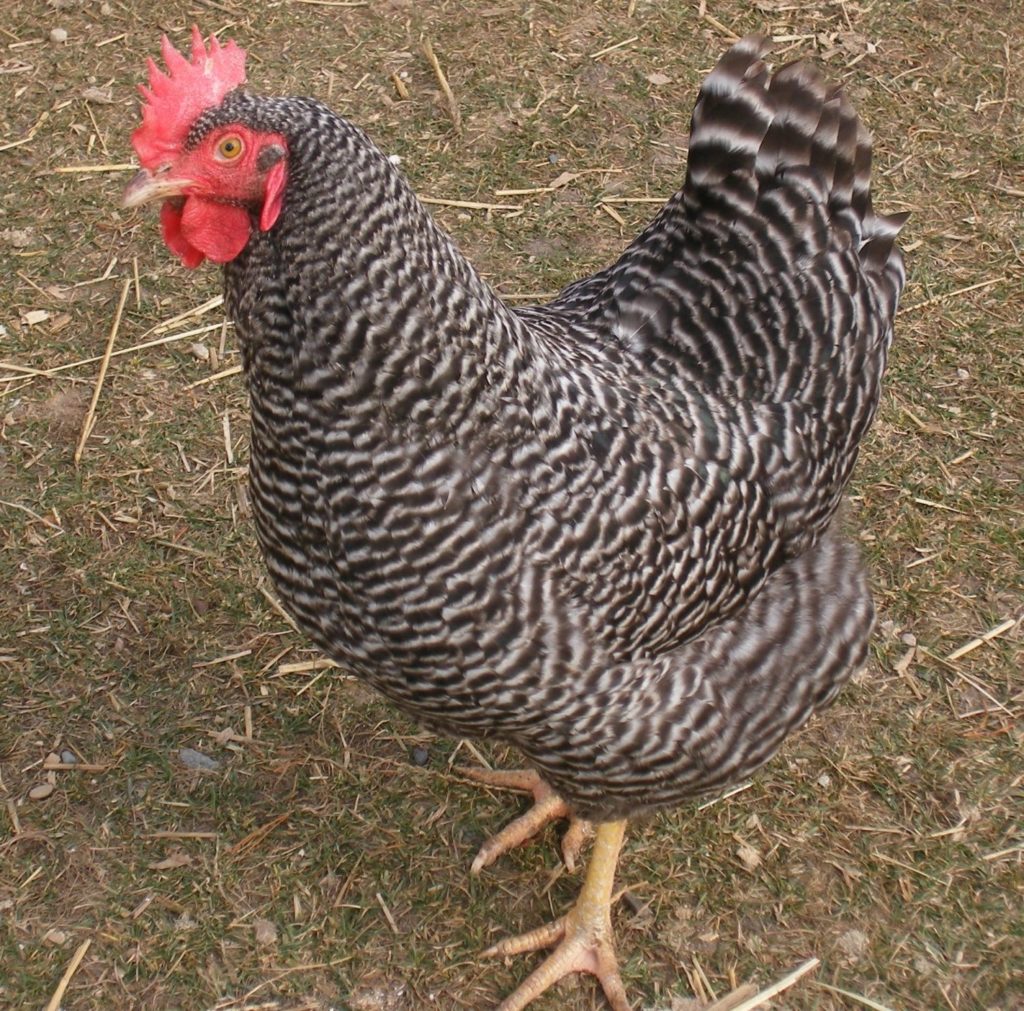
Barred Rock
All right, so number six on our list is the Barred Rock. Now the Barred Rock is probably the nicest and most docile chicken on our entire list. They lay about 280 eggs a year. They start laying between 18 and 22 weeks. They’re just such a classic chicken to have. Again, super friendly, great foragers all around. I totally recommend these chicks. You’ll definitely probably find them in most of your feed stores. They’re, again, extremely popular, and just such a great classic breed. So remember those ones, the Barred Rock.
Behaviour
They are friendly birds which are easy to tame and are vigorous and hardy birds which do not need a lot of space, but at the same time love to run free, They are not good fliers so do not require high fencing. Plymouth Rocks do tend towards broodiness though, so regular egg collecting is important to avoid this. Chicks feather up quickly and make great pets due to their docile nature. Plymouth Rocks lay a large egg that varies in colour from light to medium brown with a touch of pink. The birds continue laying throughout the winter but with decreased production. The amount of eggs laid is dependent upon the strains of the birds.
Appearance
They are large, long-lived chickens and the hens have a deep, full abdomen which is a sign of a good layer. They have a broad, deep and well-rounded breast and bright yellow legs. The face is red with red ear lobes, a bright yellow beak, bay coloured eyes and a single medium-sized comb. There are eight colours of Plymouth Rocks recognized in most of the world, but in Australia, the barred colour is split in to two separate colours, Dark Barred and Light Barred. The difference between these colours is highly noticeable, with the bars of white colour wider and the grey lighter in the Light Barred, than in Dark Barred. Other colours include multiple pencilled or triple laced, pencilled partridge, multiple pencilled silver partridge, Columbian, buff Columbian and blue laced.
Pros:
- Probably the nicest
- Docile chicken
Cons:
Best chicken breeds for white eggs
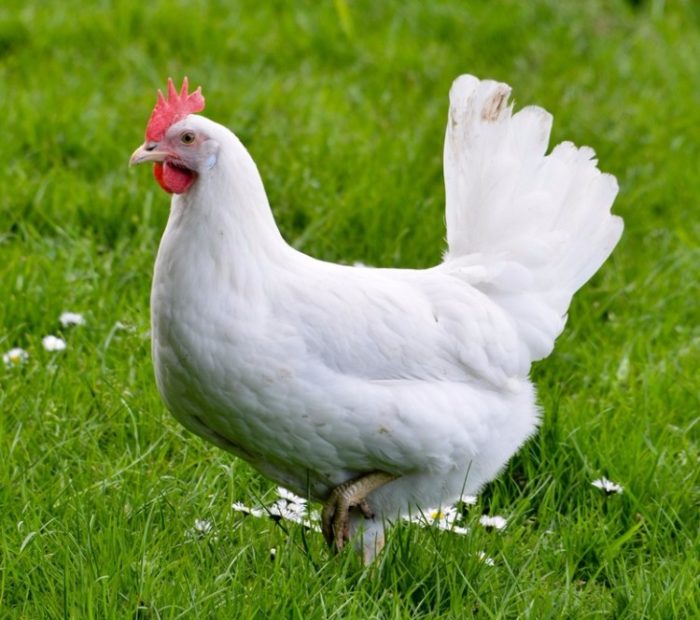
White Leghorn chicken
Number seven on our list is the White Leghorn chicken. These chickens are the most notorious chicken out there. They’re the white chicken that lays the white eggs. They do lay 280 eggs a year, so that is a pretty high number for that chicken. They are best as a penned type chicken, but they will free range if given the opportunity. These chickens are very flighty and nervous, so they are more of a challenge to wrangle in if there’s something you might need to do with that chicken. So if you’re looking for a more adventurous chicken and a challenge, I recommend the Leghorn.
They don’t get necessarily too big, so I couldn’t put them into the grouping of a dual purpose chicken, but for the sake of egg laying and that classic white egg, the Leghorn breed is sure to please and be a great addition to your flock.
The average amount of time that it takes them to start laying is between 16 to 17 weeks, so you don’t have a giant amount of time in between waiting to see those glorious white eggs come out.
Behaviour
Leghorns are prolific white egg layers and rarely go broody. The chicks are easy to rear and grow and mature quickly. Leghorns are happy free ranging but equally happy in a run. They are alert, noisy, energetic birds that can be tamed but do not tend to like handling. Leghorns are not very meaty chickens so do not make good table birds.
Appearance
As well as white Leghorn there are also brown, black, blue (not laced), buff, cuckoo, golden duckwing, silver duckwing, exchequer, mottled, partridge and pyle recognised varieties. Leghorns have large combs so care needs to be taken to avoid frostbite.
Pros:
- They’re the white chicken that lays the white eggs
- Lay 280 eggs a year
- Start laying is between 16 to 17 weeks
Cons:
- Very flighty and nervous
Best backyard chickens

Golden Laced Wyandottes
All right, number eight is Golden Laced Wyandottes. Now these chickens, again, are very docile. They don’t lay that many eggs. It’s about 200. They start laying in about 18 to 20 weeks, but they’re just very, very pretty chickens, very good foragers. Overall, very nice chicken to have. They don’t lay the most amount of eggs, but I definitely would recommend to add them into your flock.
Good for raising chicks
One other big plus is they are really good at being mothers. They’re really good at hatching a big clutch of eggs. If you’re looking to raise your own baby chicks, Wyandottes are very good mothers.
Pros:
- Very docile
- Very pretty chickens
- Very good foragers
Cons:
- Lay 200 eggs
Best chicken Dual-purpose
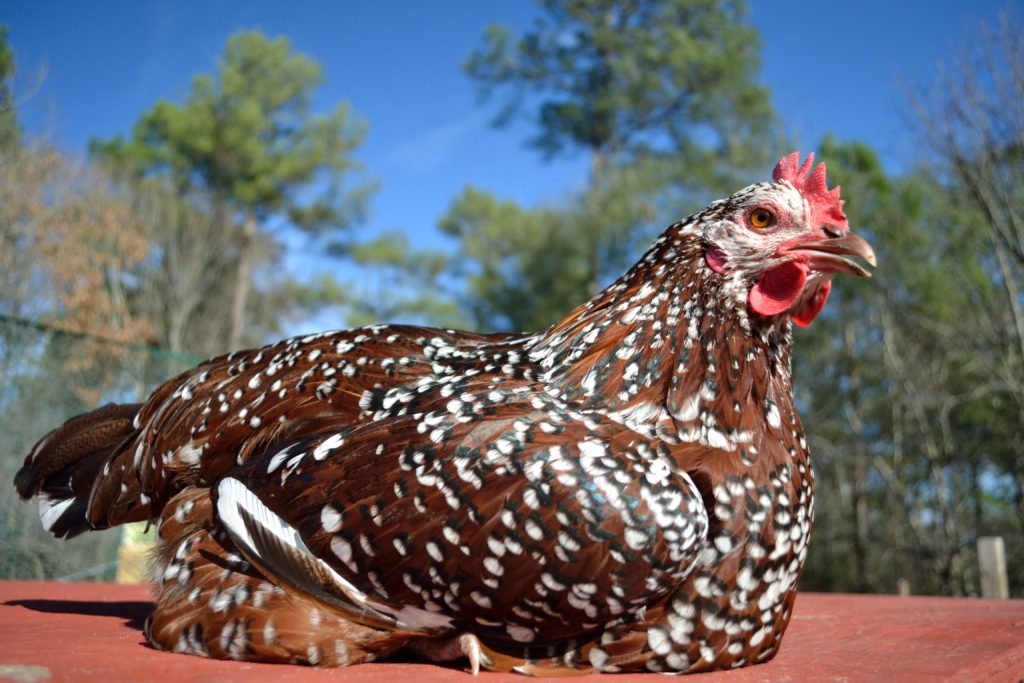
Speckled Sussex
Number nine on our list is the Speckled Sussex. These chickens are super heavy layers. They lay around 250 to 300 eggs a year. That’s a lot of eggs.
Very flexible
But not only are they heavy layers, they also are heavy in general, so they make a really great dual purpose chicken. Their temperament is really great. They’re slightly curious and they’re also a very docile chicken. They start laying eggs at around 16 to 20 weeks, so you don’t have to wait too long to see those great eggs come out. And another thing I want to mention about their weight is on average they weigh about eight pounds. That’s a really, really big chicken, especially in your rotisserie or your oven.
One con is since they are so docile, they can be victims of bullying. No bullying. From other chickens, such as the Rhode Island Red that we talked about earlier. So that’s always some things to keep in mind, so your chickens don’t get beat up too much. But overall, they’re a really great chicken. I love to have a diverse flock and they’re one of those chickens you just want to have in your flock.
Behaviour
The Sussex chicken is a docile but alert breed and great at adapting to its surroundings. They are good foragers and enjoy being free range, but will also be fine in confined spaces. The breed does not tend to broodiness, but of all the varieties it is the Speckled which is most likely to do so.
Appearance
The original colours were Brown, Red and Speckled, but Buff, Light, Silver, White and Coronation are now available. Sussex chickens have long, broad, flat backs and are of a rectangular build. Eyes are red in the darker varieties but orange in the lighter ones and they should have medium-sized, single, erect combs. All varieties have white skin and red ear lobes. The brown and red varieties are rare but the other colours are quite common.
Sussex Bantams
The Sussex bantam is a quarter of the size of its larger cousin and is available in all eight colours. Sussex Bantam’s docile nature makes them great pets for children and they also make good mothers should you wish to breed. In addition unlike a lot of Bantams they are prolific layers and will also lay through winter, when a lot of Bantam breeds stop.
Pros:
- Lay around 250 to 300 eggs a year
- Great dual-purpose chicken
- Great eggs
Cons:
- They can be victims of bullying
Great chick
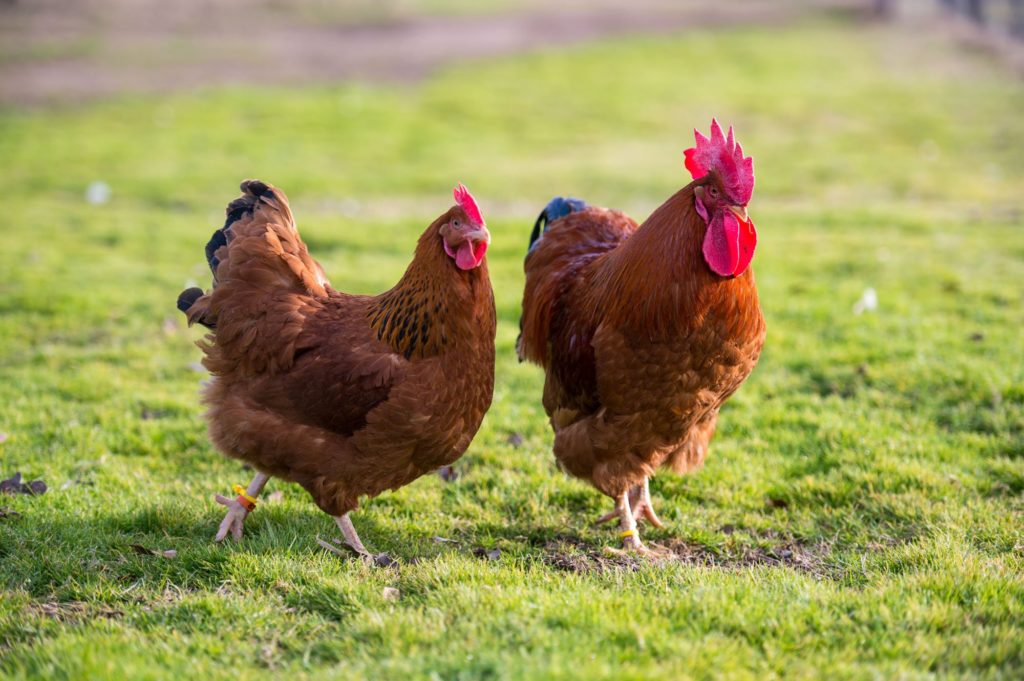
New Hampshire Red
Number 10. The last one on our list, the New Hampshire Red. Now these chicks, they don’t lay as many eggs, it’s about 200 a year, but they are tough chicks, they are pretty hardy. They can be a little bit aggressive, but they do start laying a little bit earlier 17 to 20 weeks. So guys, overall, they’re another great chick to have on your homestead.
Pros:
- They are tough chicks
- Pretty hardy
Cons:
- Lay eggs 200 a year
All in all, this list of 10 chicks, I would love every single chicken on this list. I think they’d be really good.
| Image | Product | Top rated |
Best Breeds, Creating a Home, Care and Handling, Outdoor Fun, Crafts and Treats 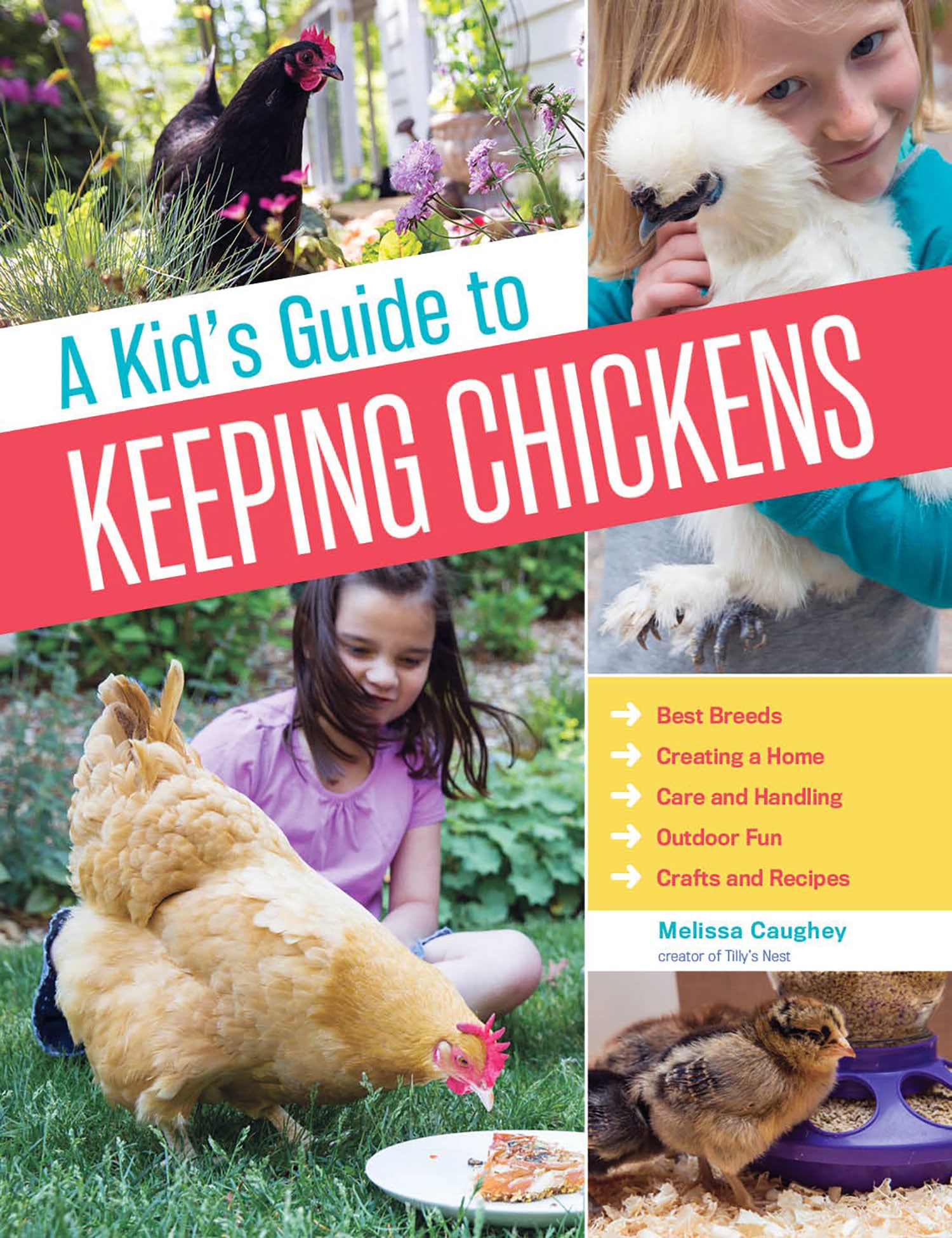 | A Kid's Guide to Keeping Chickens
| Check Price |
Breed Selection, Facilities, Feeding, Health Care, Managing Layers & Meat Birds 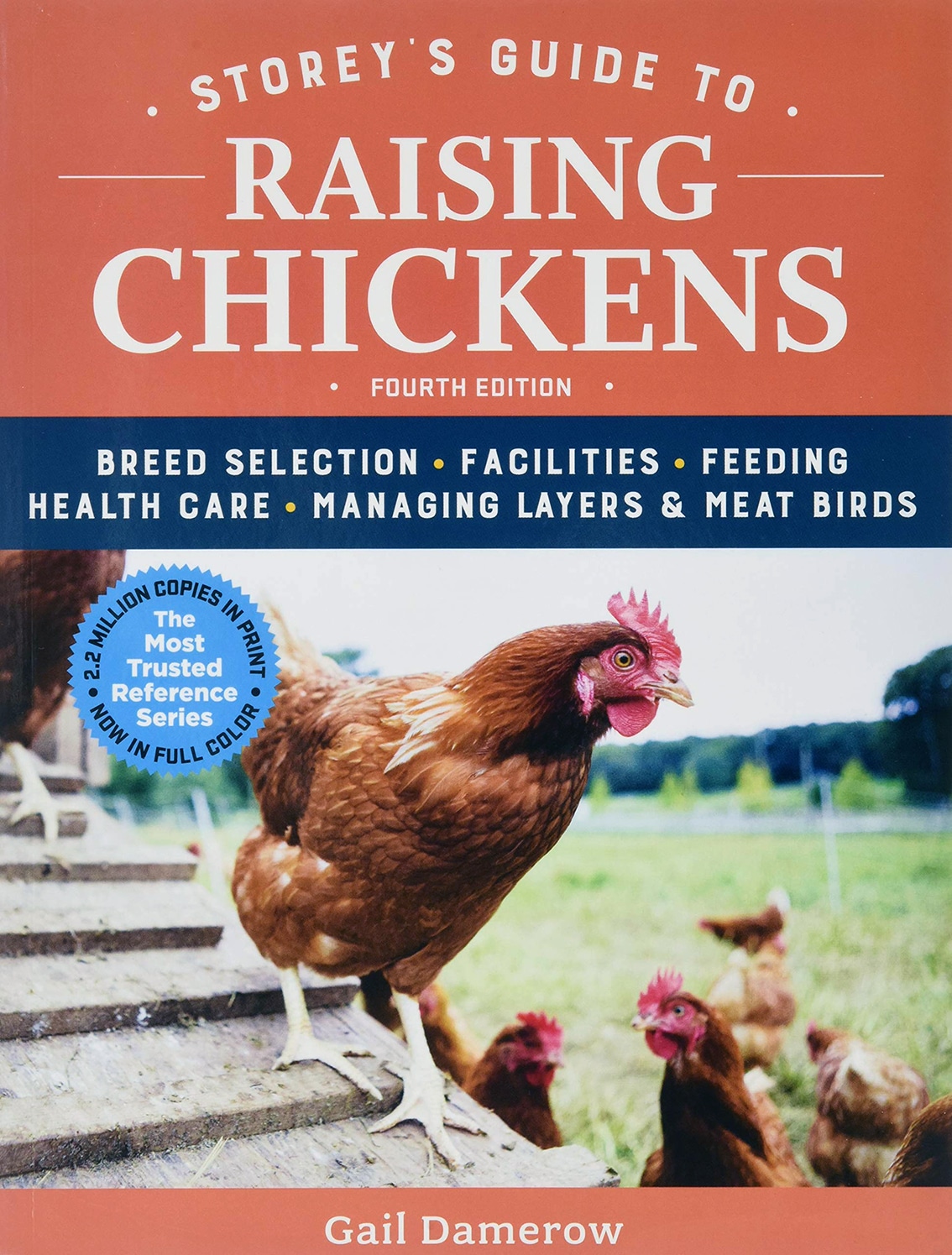 | Storey's Guide to Raising Chickens, 4th Edition
| Check Price |
An All-Natural Approach to Raising Chickens and Other Fowl for Home and Market Growers 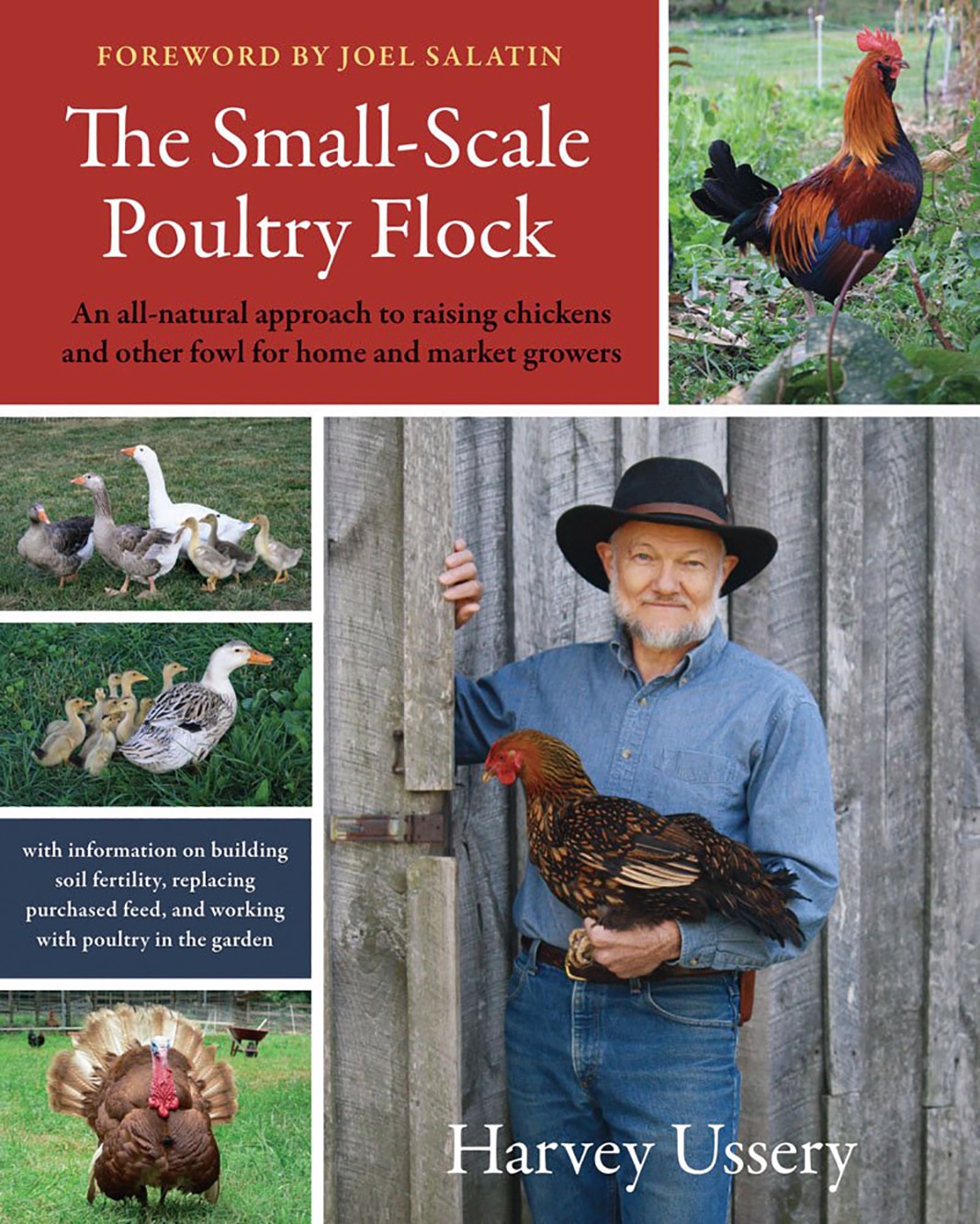 | The Small-Scale Poultry Flock
| Check Price |
Choosing the Best Breed of Chicken
There is a huge choice of breeds to choose from and the one you select will largely depend upon your reasons for wanting to keep chickens. You should consider whether you want to keep them for eggs and meat, as a family pet or for showing and exhibiting.
If you are considering which is the best breed of chicken for meat, eggs or both, you basically have three choices.
Compared with a lot of hobbies chicken keeping is remarkably jargon-free. But there are a few definitions that will help you when it comes to choosing which breed of chicken to start with.
Laying Breeds
Laying breeds are the best choice if you want to have eggs above all else. A typical egg-laying breed chicken can produce between 180-240 eggs a year per hen. If you keep three hens then you can expect them to produce up to 720 eggs a year, which is an average of just under 2 eggs a day.
Your laying hen should start laying eggs at around 5-6 months old and will continue to lay at a steady rate for several years. As your hen ages, egg production will slow, as the hen becomes older and ‘spent’. Laying breeds expend most of their energy during their lives producing eggs, therefore afterward ‘spent’ hens are usually skinny with little real meat on their bones.
Meat Breeds
Meat breed chickens are bred for their suitability for the table. If you buy these breeds of chickens, be prepared for the fact that they grow very fast, as the faster they grow, the more tender their meat is. Certain meat breed chickens can reach eating weight within just 6 or 7 weeks.
There are two main types of chickens you can raise for meat, these are:
- Broilers- Fryers – butchered at between 3-5lbs in weight.
- Roasters – butchered at between 6-8lbs in weight.
Basically, a Broiler-fryer is a chicken suitable for the BBQ or grill, whereas the roaster is as it indicates is more suitable for roasting. Broiling differs from roasting and baking in that the meat is turned during the process so as to cook one side at a time. Broilers are likely to be younger and therefore more tender.
Dual Purpose Breeds
However, if you wish to have both eggs and meat from your chickens, dual-purpose chicken breeds are a great choice for the home chicken owner. Dual-purpose breed chickens lay a steady supply of eggs whilst building a decent amount of meat on their bones. As you might expect, there are some variations between breeds, with some producing more meat than eggs and others the reverse. So it is a case of choosing the best breed for your family’s needs.
Here are some more terms that you should be aware of when deciding upon which breed to choose:
Chickens come in two main types, bantams, and large breeds. Bantams are on average, 20-25% smaller than large breeds. It should however be noted that many breeds are actually available in both sizes.
Bantams
You will find that Bantams are divided into classes according to their distinctive features, such as whether they have leg feathers or not. Being smaller than large chickens, they are particularly suitable for keeping in your back garden and they also make great pets for young children. The downside is that their eggs are smaller, but on the plus side they scratch about less than their bigger cousins, so you will have more of your flower beds and lawn left.
Large Breeds
Large breed chickens tend to be classed according to their original place of origin, such as English, American, Asiatic or Oriental. Within these classes, chicken varieties are defined by other distinctive features, such as feather coloring or comb style, and a lot more besides which you will need to know if you want to show chickens or become a chicken breeder.
Within these two categories you have pure breeds and hybrid breeds.
Pure Breed Chickens
These are the pedigree chicken breeds, they often have flamboyant feathers, striking good looks, and an attitude to match. Their breed standards are written down and approved by national organizations, just like pedigree dogs or cats. Pure breed chickens usually don’t lay as many eggs as hybrid breeds and are generally less docile so are not as practical to keep. As a result, some older, traditional breeds have fallen out of favor and have become quite rare.
Hybrid Breeds
As the names suggest, hybrid breeds have been developed by crossing two or more pure breeds to create a chicken that fulfills a particular function, such as providing more eggs, or more breast meat. They may not be as good-looking as the pure breeds but are often more suitable for the first-time chicken keeper. Generally, hybrid chickens are hardy and disease-resistant as they have been vaccinated against common illnesses, unlike pure breed chickens.
You will also find that breeds are also defined by certain characteristics, here are some of them:
Hardiness
This does not just relate to how well a chicken is suited to cold weather but it also refers to the breed’s ability to sustain itself through tougher times in general, any genetic weaknesses, and its tendency to forage versus eating feed, often called ‘thriftiness’. Some of the older, less heavily factory farmed breeds like the heritage or heirloom breeds still retain many of the qualities that chickens needed when they were living in backyards all across the country. In contrast, production breeds have sometimes lost the ability to forage for bugs and weeds in the fields and woods.
Heavy Breeds
Heavy breeds have thicker bodies and denser feathers and are therefore happier in the cold than non-heavy breeds. They are also more likely to continue laying eggs through the winter.
Temperament
Breeds are described as docile or aggressive depending on the traits they display. However, among any given flock, temperament will be influenced more by the pecking order than by genetic tendency. Those higher in the pecking order are the more aggressive birds and those lower in the order are more submissive and docile. If you have small children, picking a more docile breed might be a good idea. Some breeds are more flighty and highly strung than others as well.
Broodiness
Breeds of chickens are usually defined by how broody they are. Hens will have various degrees of broodiness, that is where they settle on the eggs, only leaving the nest once per day to eat and drink. If you’re trying to hatch eggs naturally, this can be a good quality in a hen. But otherwise, this can be pretty annoying as not only is the broody hen not producing eggs, but she’s making the eggs under her age faster due to warmth.
Buying your First Chickens
So you have your shiny new chicken coop and are keen to find new occupants, here are a few tips on what to consider when buying chickens for the first time:
Always buy your chickens in person.
When buying chickens, you need to see what you are getting. Some companies will deliver them, but reputable breeders operate a collection-only policy and with good reason. Check that they are fully vaccinated against diseases relevant to your area. For example in the UK you should consider the following vaccinations: Newcastle Disease, Marek’s Disease, Fowl Pox, Laryngotracheitis, Fowl Cholera and Infectious Bronchitis.
By buying in person, you can see the condition of your birds, how they are kept and reject any that are obviously sickly or ill or otherwise not as they should be. Do not buy a chicken that is in poor condition out of sympathy unless you are prepared for the expense and the heartache.
You can buy chickens in full lay (20 to 25 weeks plus) or you can buy chickens before they start to lay, known as pullets or P.O.L which stands for point of lay, which are usually around 10 weeks old. Another option would be to get some ex battery chickens, which are available for free or a small donation. There are a number of battery chicken rescue charities to choose from on the internet. But you should be prepared for the fact that some of these birds are in pretty poor condition and will need a lot of care.
Buy in the day light and examine the birds closely .
Buy your chickens in daylight, when you can properly see their condition. A healthy hen should be alert, active and bright-eyed during the day. There is no substitute for picking up a chicken and examining her condition for yourself. Look for smooth legs, good feather condition and a firm body, indicating good muscle and meat development. Gently part the feathers for a quick inspection for lice or skin conditions hidden below.
When picked up, the bird should not be wheezing or coughing. If in doubt, put your ear close to their beak and listen for a minute. Birds with respiratory problems should be avoided. Also check around the bird’s vent as a lot of muck there could indicate a worm problem. Trust your instincts; if you like the bird and the bird likes you, buy it. If you feel something is not right then look elsewhere.
Start with a few hens.
If you are new to chicken keeping then start with a few hens, 2 to a maximum of 4 is ideal. Remember you can always add more once you know what is really involved. However, chickens are social creatures so it is cruel to only keep one. Chickens do require as much care and attention as any other pet so make sure you really do have the time in your daily schedule.
Where to Source Hatching Eggs?
So you have decided to hatch your own eggs, now you need to find a source.
Your Own Nest Box
The easiest and best method is to hatch eggs from your own hens and use one of your hens to hatch the eggs. As long as you have a rooster you can expect your eggs to be fertile and therefore potentially to produce a chick. It may seem obvious but a lot of people do ask; if you have no rooster and your hens have had no access to one, any eggs produced will not be fertile and will not be hatchable. If you are breeding for your backyard flock, you have the chance to choose eggs from hens you like, either for their looks, their laying ability, their friendliness or some other quality. I would only hatch eggs from my friendliest and healthiest hens.
If you are just starting out or have no rooster, you will have to source your hatching eggs from a third-party. You have the following options:
Source Hatching Eggs Locally
Another option is to find eggs from a local farm and feed store, or from a local breeder. You may often be able to buy fresh farm eggs from someone who sells their extra eggs and if they have a rooster, you may be able to hatch those eggs, talk to local small holders.
Eggs have the best chance of hatching when they are stored at about 60 degrees or so and turned occasionally. So buying eggs that have been in a refrigerator are unlikely to hatch. Similarly with shop-bought ones, even if fertile most of these will be over a week old and the chances of hatching them again are slim. However, even if you are lucky and manage to hatch an egg from a store or any box of eggs from an unknown source, remember you will not know what sort of chicken you are getting and it could be highly strung or if female a poor layer.
Rare Breed Specialists
If you wish to rear a specific breed of chicken and want to be sure it is going to be a pure breed you will need to go to a reputable hatchery. Try the breed club for the breed of chicken you wish to keep as they will have a list of trustworthy suppliers.
Online Listings
You can of course now buy hatching eggs on eBay and Craigslist and other similar listing sites. If purchasing from there be sure to ask for evidence that they have NPIP (National Poultry Improvement Plan) certification or your country’s equivalent as diseases can be passed from mother to chick through the egg.
Shipping
You will find that eggs from your own flock or bought locally will have a better hatching rate than shipped ones. Shipped eggs if treated roughly can often produce no chicks and even with a specialised carrier you should only expect a 50% hatching rate.
Bringing your New Chickens Home for the First Time
When you first buy your chickens it is advisable to put them into their new house for the first time at night so that they wake up in their new chicken coop in the morning. Over a few days they will soon become adjusted to their new surroundings. Some hens will come out of the coop door in just a couple of hours while other hens may take a couple of days to venture out. Just keep an eye on them, you may need to encourage them out of the coop with a little corn, but they will soon get the idea and realise this is their new safe home.
If you are going to be free-ranging your hens in your garden it is not advisable to do this too soon, wait until you feel they are fully settled into their new hen-house and run first. Most people suggest keeping them in for a week to start with. By providing food in their coop they will soon associate it as a place where they sleep and are fed and as a result will tend to stay around it during the day and return at dusk. Even if they are to free range it is better that they do not wander too far as the further they roam the more likely it is that they will encounter a predator.
First Eggs
Most people tend to go for pullets or point of lay hens as a first choice, these will be between 10 and 20 weeks old. Chickens start to lay when they are approximately 20 – 25 weeks old, but this can vary from chicken to chicken. Pure breed chickens usually take longer to start laying than hybrids. When the chicken’s comb and wattle become a vibrant pink/red, this is usually an indication that it’s about to start laying. You do not need to have a rooster for your hen to lay eggs and you only need to have one if you wish to produce your own chicks.
When chickens first start to lay, their eggs will be quite small, but they will gradually lay larger eggs until they reach a maximum size. Egg production tends to drop by 10% a year until about the age of three, when their rate of lay will decline dramatically, then stop altogether.
For back garden egg production, depending on the breed and age of the chickens, a rate of the lay of approximately 240 to a maximum of 350 eggs per year per chicken, can be expected from the most commonly kept breeds. Egg size and color vary from breed to breed and to a certain extent from chicken to chicken. Some breeds lay larger eggs than others, some lay white eggs, some lay light/dark brown eggs. There are even breeds such as Araucana that lay blue/green eggs. The breed currently at the top of the tree in terms of rate of lay is the Bovan Goldline which lays approximately 350 eggs per year and which has been specially developed for commercial egg production. Some breeds, such as Buff Orpington and Silkies have striking plumage but are relatively poor layers
Chickens’ laying cycles are heavily dependent on the amount of light they are exposed to each day, therefore it is important that they are let out at first light every morning. The chicken house door should be closed at dusk every evening after all of the chickens have returned to it. During the winter months, because of the short days, a chicken’s rate of lay may decrease substantially or stop altogether until the long days return in the spring.
Read More from prestigequeen.com :
- How to make an egg incubator?
- How to Use an Egg Candler?
- The best chicken BROODER box
- Incubating & Hatching Eggs – chicken keeping
- How to hatch chicken eggs without an incubator
Contents

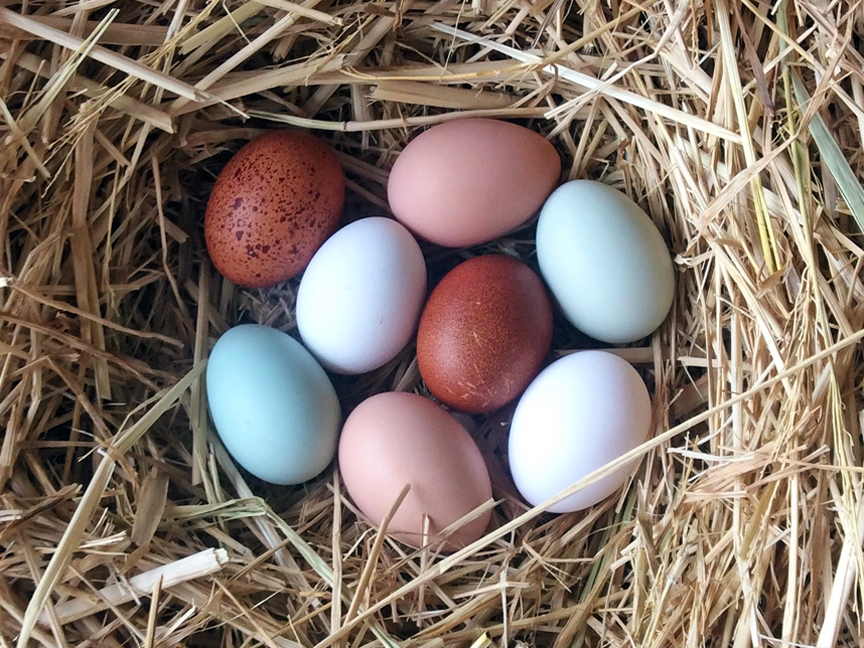
Top 10 egg laying chickens
Golden Laced Wyandottes is really good
my choice Speckled Sussex
Like!! Thank you for publishing this awesome article.
best material on the topic